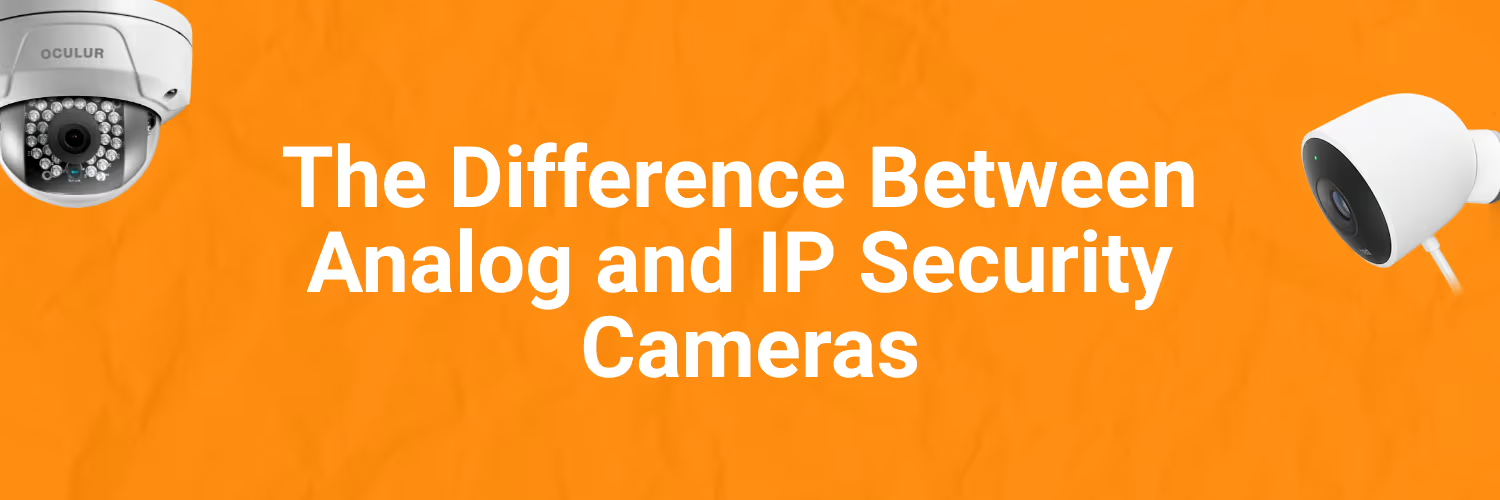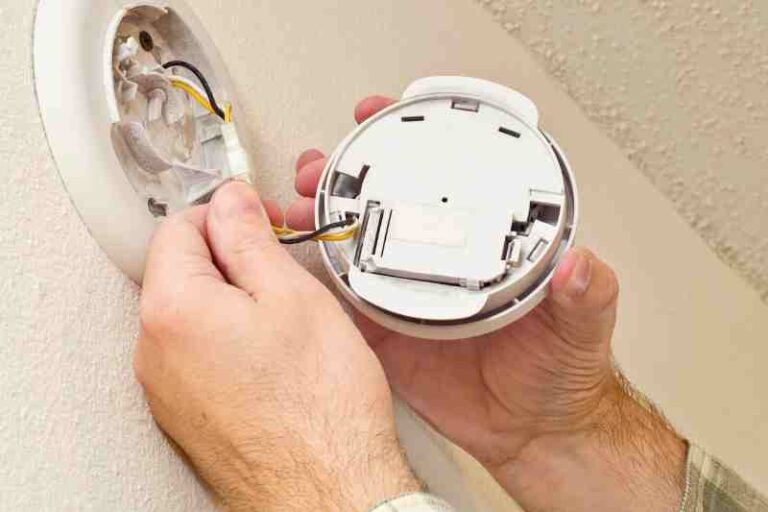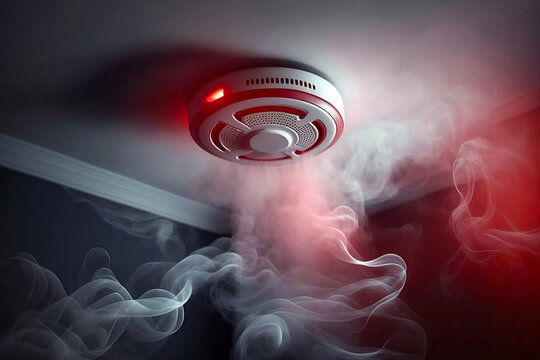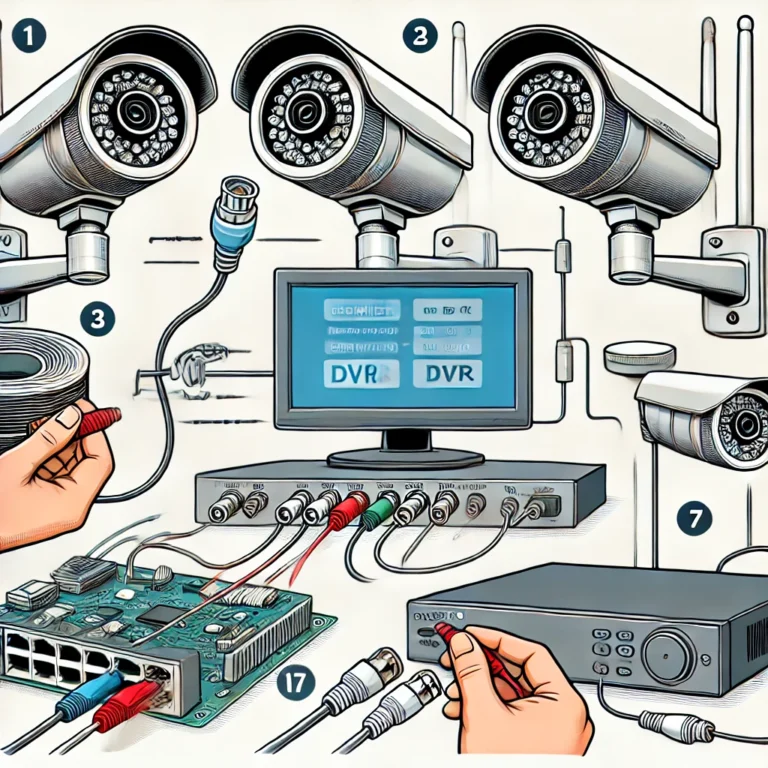The Evolution of CCTV Technology: From Analog to IP Cameras
Introduction
Closed-Circuit Television (CCTV) cameras have become a crucial part of modern security systems, protecting both homes and businesses. The role of CCTV in crime deterrence, monitoring, and incident recording has never been more significant. However, the technology behind CCTV systems has evolved tremendously over the years. What began as a basic, analog technology has now transformed into sophisticated IP-based systems that provide higher quality, flexibility, and enhanced security features. In this blog, we’ll explore how CCTV technology has evolved, from its analog roots to the high-tech IP cameras we see today.
1. The Early Days: Analog CCTV Cameras
What Are Analog CCTV Cameras?
Analog CCTV cameras were the pioneers of the surveillance world. These systems worked by transmitting video signals over coaxial cables to a central recording device, such as a DVR (Digital Video Recorder). Analog cameras became widely popular in the 20th century due to their relatively low cost and simplicity in installation.
These cameras usually had a limited resolution, typically in the range of 480p or 720p, and provided a continuous feed to the DVR, where footage was stored on hard drives or magnetic tapes. These tapes needed to be replaced or overwritten after a certain period, which posed challenges in terms of archiving and storage management.
Limitations of Analog CCTV
Despite being a crucial security tool for many years, analog CCTV cameras had several limitations:
- Resolution: Analog cameras had relatively low image quality, making it difficult to capture fine details such as faces or license plates.
- Cabling: These systems required complex, long coaxial cables for transmission, which made installation more difficult, especially in large areas.
- Storage: Storing footage was cumbersome. The DVR had limited storage space, meaning footage would often be overwritten after a few days, making it challenging to keep long-term records.
- Remote Access: Analog cameras lacked the ability for remote viewing, requiring on-site monitoring to view footage.
2. The Rise of Digital: The Transition to IP Cameras
What Are IP Cameras?
With the advent of the internet and networking technology, CCTV systems began transitioning to IP (Internet Protocol) cameras in the early 2000s. Unlike their analog predecessors, IP cameras send digital video data over a network (such as the internet or a local area network). These cameras are connected to a central server or cloud-based storage, allowing for more sophisticated surveillance capabilities.
An IP camera system doesn’t rely on coaxial cables; instead, it uses Ethernet cables or Wi-Fi for communication. This makes installation simpler and allows the system to be scaled more easily.
Benefits of IP Cameras
IP cameras offer several advantages over traditional analog cameras, including:
- Higher Resolution: One of the most significant improvements with IP cameras is the resolution. IP cameras can offer high-definition (HD), Full HD, and even 4K resolution, which provides clear, detailed footage that makes identifying individuals and objects much easier.
- Flexibility: Since IP cameras connect to the network, they do not require the same extensive wiring as analog systems. This makes installation easier, especially in larger or more complex areas, and allows for more flexibility in terms of camera placement.
- Remote Access: IP cameras can be accessed remotely via smartphones, tablets, or computers, meaning users can monitor their property from anywhere in the world as long as they have an internet connection.
- Advanced Features: IP cameras often come with built-in features such as motion detection, night vision, and facial recognition. These features are typically more advanced than what analog systems could offer.
- Scalability: One of the main advantages of IP systems is scalability. You can easily add more cameras to the system without a major overhaul, making IP systems ideal for growing businesses or homes with expanding security needs.
3. Smart CCTV Systems: The Future of Surveillance
Integration with Smart Technology
As technology continues to advance, CCTV systems are becoming smarter. Modern IP cameras now integrate with other smart home systems and security technologies. For example, IP cameras can connect to alarm systems, smart locks, and motion sensors, creating a fully automated security network. This allows for features such as automatic door locking when motion is detected, or automatic lighting when cameras sense movement.
Cloud Storage and AI Capabilities
Another major improvement is cloud storage. Unlike traditional CCTV systems, where footage was stored on hard drives or DVRs, IP cameras often store footage on the cloud. This offers several advantages:
- Access from Anywhere: You can view footage from any device with an internet connection.
- Unlimited Storage: Cloud storage is virtually unlimited, allowing for much longer storage periods compared to local storage.
- Advanced Analytics: Modern IP cameras are often equipped with artificial intelligence (AI) that allows for real-time video analysis. For example, AI can identify suspicious behavior, recognize faces, or detect license plates, and then send real-time alerts to users. This can help prevent security breaches before they occur.
Enhanced Security and Automation
Smart IP CCTV systems can also work with other security devices, such as smart locks, security lights, and alarms, to provide a fully integrated security solution. When a motion is detected by the camera, it can trigger an alarm, send you a notification, or even lock the doors and activate lighting around the property. This level of integration increases the overall security of the property and provides peace of mind for the owner.
4. Comparing Analog vs. IP Cameras
| Feature | Analog CCTV | IP CCTV |
|---|---|---|
| Cost | Generally cheaper upfront | Higher initial cost, but offers more value over time |
| Resolution | Lower resolution (480p to 720p) | Higher resolution (1080p, 4K, etc.) |
| Cabling | Requires extensive coaxial cabling | Uses Ethernet cables or Wi-Fi |
| Storage | Limited storage, often overwritten | Cloud or large storage capacities |
| Scalability | Difficult to expand | Easily scalable, add cameras as needed |
| Installation | Complex and cable-heavy installation | Simple and flexible installation |
| Remote Access | No remote access | Remote access via web or mobile apps |
Conclusion
The evolution of CCTV technology has transformed security from a basic surveillance tool into a sophisticated, intelligent system. From the days of grainy analog footage to the clarity of 4K IP cameras with smart features, CCTV technology has dramatically improved in terms of quality, flexibility, and functionality.
If you’re still using an analog system, it might be time to consider upgrading to an IP-based solution. With higher resolution, easier installation, remote monitoring, and advanced features like cloud storage and AI-driven analytics, IP cameras provide a far more effective and convenient way to protect your home or business.
Don’t wait for a security breach to realize the importance of modern surveillance. Consider upgrading to the latest CCTV technology and ensure that your property remains safe and secure.
Image Credit: https://www.a1securitycameras.com/blog/the-difference-between-analog-and-ip-security-cameras/







